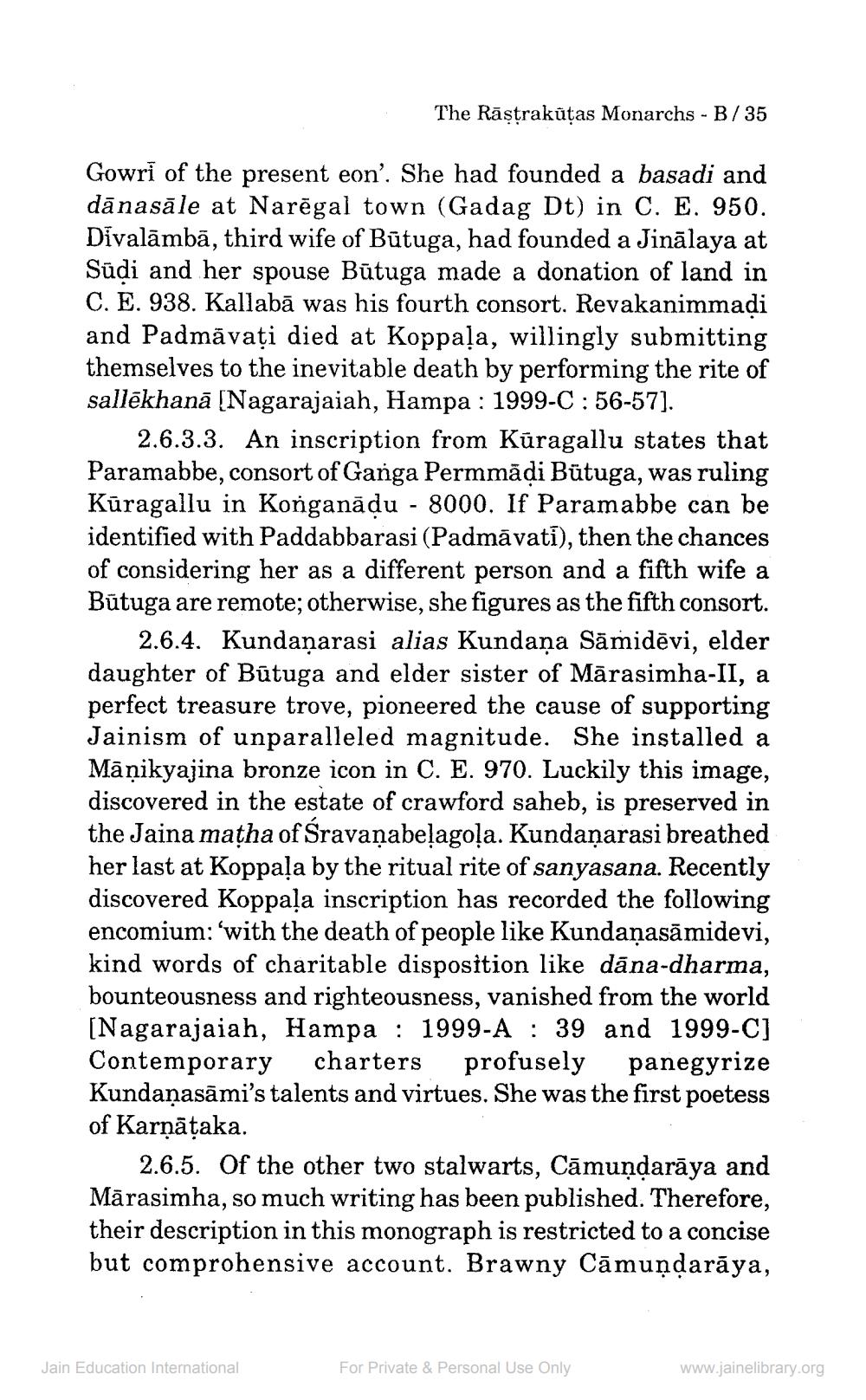________________
The Rāstraküțas Monarchs - B/35
Gowri of the present eon'. She had founded a basadi and dānasāle at Narēgal town (Gadag Dt) in C. E. 950. Divalāmbā, third wife of Būtuga, had founded a Jinālaya at Sūdi and her spouse Būtuga made a donation of land in C. E. 938. Kallabā was his fourth consort. Revakanimmadi and Padmāvați died at Koppala, willingly submitting themselves to the inevitable death by performing the rite of sallēkhanā [Nagarajaiah, Hampa : 1999-C : 56-57].
2.6.3.3. An inscription from Kuragallu states that Paramabbe, consort of Ganga Permmāļi Būtuga, was ruling Kūragallu in Konganādu - 8000. If Paramabbe can be identified with Paddabbarasi (Padmāvati), then the chances of considering her as a different person and a fifth wife a Būtuga are remote; otherwise, she figures as the fifth consort.
2.6.4. Kundanarasi alias Kundaņa Sāmidēvi, elder daughter of Būtuga and elder sister of Mārasimha-II, a perfect treasure trove, pioneered the cause of supporting Jainism of unparalleled magnitude. She installed a Māņikyajina bronze icon in C. E. 970. Luckily this image, discovered in the estate of crawford saheb, is preserved in the Jaina matha of Sravanabelago!a. Kundanarasi breathed her last at Koppala by the ritual rite of sanyasana. Recently discovered Koppaļa inscription has recorded the following encomium: 'with the death of people like Kundaņasāmidevi, kind words of charitable disposition like dana-dharma, bounteousness and righteousness, vanished from the world [Nagarajaiah, Hampa : 1999-A : 39 and 1999-C] Contemporary charters profusely panegyrize Kundaņasāmi's talents and virtues. She was the first poetess of Karnataka.
2.6.5. Of the other two stalwarts, Cāmundarāya and Mārasimha, so much writing has been published. Therefore, their description in this monograph is restricted to a concise but comprohensive account. Brawny Cāmundarāya,
Jain Education International
For Private & Personal Use Only
www.jainelibrary.org




